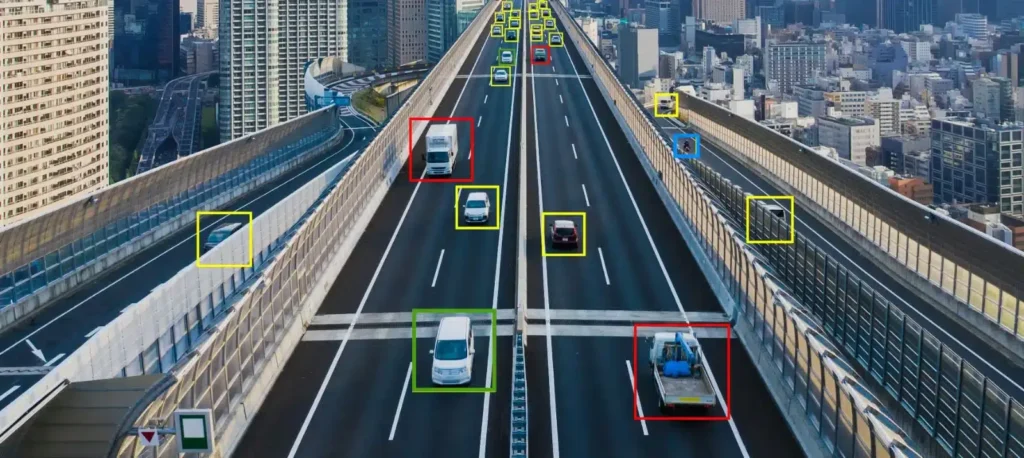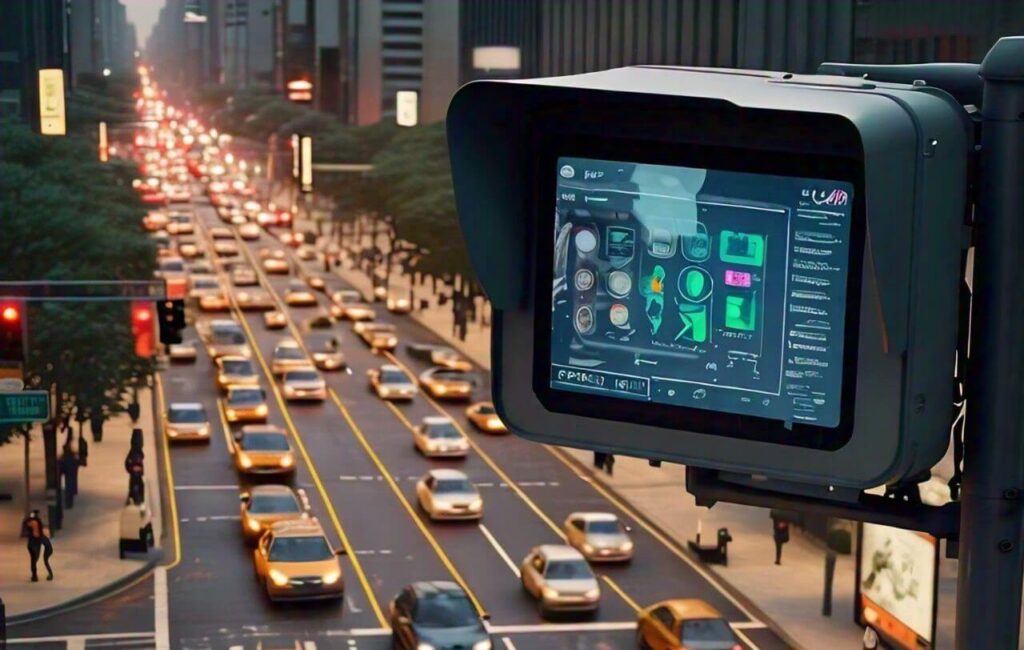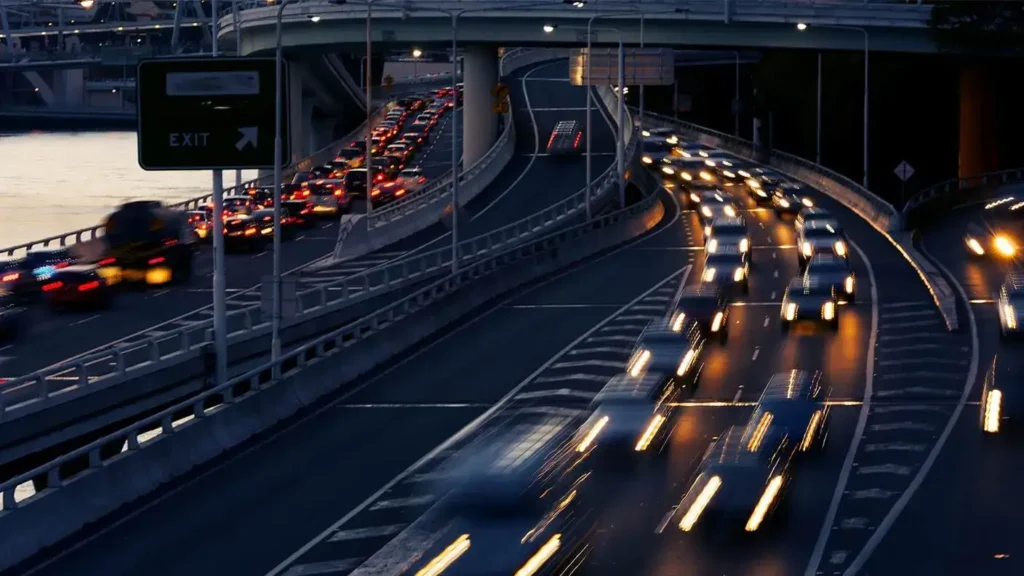Traffic is one of the most persistent challenges of urban life. Congestion, accidents, pollution, and time loss plague cities worldwide. Traditional traffic management—based on fixed signal timings, human error, and delayed responses—often makes matters worse. But in 2025, AI traffic systems that are smarter than humans are transforming how cities move.
From real-time signal optimization to predictive congestion management and autonomous incident response, artificial intelligence is turning roads into adaptive, intelligent environments.
Introduction: The Rise of Intelligent Traffic Control
Cities were never designed for millions of vehicles. Human-managed traffic systems often rely on outdated patterns or reactive decisions. AI offers a fundamentally better approach by:
- 🚦 Optimizing traffic signals based on real-time flow
- 🚓 Detecting accidents instantly
- 🌍 Coordinating across entire city grids
This shift marks a new era of data-driven, self-improving urban mobility systems.
How AI Analyzes Traffic Data in Real Time
AI traffic systems depend on a rich mix of inputs from:
- Cameras and smart sensors at intersections and along roads
- GPS and telemetry data from public and private vehicles
- Weather and event feeds for contextual awareness
AI algorithms process this data using machine learning and pattern recognition, enabling:
- Instant adjustments to traffic flow
- Forecasting of traffic jams before they happen
- Coordination across traffic lights, signs, and even smart vehicles
Key Technologies Behind Smart AI Traffic Systems
Several cutting-edge technologies power these systems:
| Technology | Function |
|---|---|
| Computer Vision | Detects vehicle types, speeds, pedestrian movement, and road anomalies |
| Machine Learning | Learns from traffic history to predict patterns and suggest improvements |
| Edge Computing | Processes data locally for real-time decision-making at intersections |
| Cloud Platforms | Centralized analytics, updates, and system-wide performance monitoring |
This tech stack enables fast, autonomous control that’s always learning and adapting.
Dynamic Traffic Signal Optimization
AI traffic systems dynamically change light cycles based on:
- Real-time vehicle density
- Direction of flow dominance
- Emergency vehicle approach detection
This allows for:
- Reduced waiting times
- Smoother flow during rush hours
- Priority passage for ambulances and fire trucks
Unlike static signal timing, AI systems adapt second by second, just like a human—but more efficiently and consistently.
Predictive Congestion Management with AI
Predicting traffic before it happens is one of AI’s greatest advantages. Using deep learning models trained on years of data, AI can:
- Forecast bottlenecks from planned events (e.g., concerts, parades)
- Detect early signs of build-up and redirect vehicles
- Suggest alternate routes to drivers via mobile apps or vehicle dashboards
In many smart cities, this has already led to a 15–30% drop in peak congestion times.
AI for Accident Detection and Response Coordination
AI systems drastically reduce emergency response time by:
- Instantly detecting crashes or breakdowns through camera feeds and impact sensors
- Automatically alerting emergency services
- Suggesting detours to other drivers
- Activating warning signals or redirecting traffic
This coordination results in fewer secondary accidents, faster recoveries, and improved safety for everyone on the road.
Integration with Smart Vehicles and V2I Communication
AI traffic networks work best when they communicate directly with vehicles. Through vehicle-to-infrastructure (V2I) communication, cars can:
- Receive speed adjustments to catch green waves
- Get early warnings about upcoming hazards
- Sync with AI to optimize electric vehicle energy use
This real-time connection turns every vehicle into a participant in the traffic solution, not just a user of the road.
Environmental Benefits of AI Traffic Systems
Smart traffic systems don’t just reduce delays—they help the planet by:
- 🔋 Cutting idle time and fuel consumption
- 🛑 Preventing stop-and-go conditions that increase emissions
- 🌿 Creating “green light corridors” for buses, bikes, and EVs
Many cities report up to 25% lower emissions after implementing AI-based signal optimization.
Smart Traffic in Action: Global City Case Studies
Across the globe, forward-thinking cities are already showing how AI traffic systems outperform traditional human-controlled infrastructure.
🌏 Singapore
- Uses AI to coordinate real-time traffic lights across city blocks
- Integrated with public transport scheduling
- Resulted in 22% decrease in travel time in high-density zones
🇳🇱 Amsterdam
- Employs AI-driven bicycle and pedestrian signals
- Adjusts traffic flow based on environmental data and festivals
- Promotes sustainable transport through adaptive light cycles
🇺🇸 Los Angeles
- LA’s ATSAC (Automated Traffic Surveillance and Control) system integrates AI
- Processes data from over 5,000 sensors and cameras
- Reduced congestion at peak hours by up to 12% after upgrades
🇰🇷 Seoul
- Tests AI to manage one of the world’s busiest intersections
- Incorporates V2I technology and emergency vehicle detection
- Enhances both speed and pedestrian safety
These cities serve as models for how AI can modernize and humanize traffic management, even in the most congested urban environments.
AI and Pedestrian Safety Enhancement
AI traffic systems don’t just focus on vehicles—they also make roads safer for pedestrians.
- 👣 Smart Crosswalks: Detect people waiting and adjust light timing automatically
- 🧠 Computer Vision Systems: Identify jaywalking or distracted walking to issue alerts
- 🦺 Voice and Light Signals: Help the visually impaired navigate crossings safely
By recognizing human behavior in real-time, AI can prevent accidents before they happen.
Urban Planning Insights from Traffic AI
AI doesn’t just manage current traffic—it also informs the future of city planning:
- 📊 Analyzes long-term traffic patterns and population flow
- 🏗️ Recommends where to expand infrastructure
- 🛣️ Identifies underutilized roads or unsafe intersections
Urban planners can use these insights to optimize roads, parking, and public transit based on real usage—not just theory.
Challenges in Deploying AI Traffic Control Systems
Despite the benefits, adoption is not without hurdles:
- 🔒 Data Privacy: Use of vehicle and camera data raises concerns about surveillance
- ⚠️ System Vulnerabilities: AI traffic grids must be secured against cyberattacks
- ⚙️ Hardware Compatibility: Legacy infrastructure needs costly upgrades
- 🌍 Policy Alignment: Regulations and standards differ across cities and countries
Overcoming these requires strong governance, transparent AI design, and public-private cooperation.
Human vs Machine: Why AI Outperforms in Traffic Management
| Factor | Human Traffic Controllers | AI Traffic Systems |
|---|---|---|
| Reaction Time | Slower, based on manual monitoring | Instant, with predictive capability |
| Scalability | Limited to local zones | City-wide and even inter-city coordination |
| Bias and Error | Prone to inconsistency and fatigue | Based on data and pattern recognition |
| Cost Efficiency | Requires more personnel and oversight | Automates decision-making and maintenance |
| Adaptability | Reactive | Proactive and continuously learning |
AI doesn’t just match human performance—it exceeds it in speed, scale, and fairness.
Future of AI-Driven Mobility Networks (2025–2035)
In the coming decade, AI traffic systems will evolve into fully autonomous urban mobility networks:
- 🧠 Self-optimizing traffic ecosystems using federated learning across cities
- 🚗 Autonomous vehicle corridors managed entirely by AI
- 🛤️ Smart public transit lanes that prioritize eco-friendly transport
- 🔋 EV priority routing that syncs charging availability with traffic flow
These networks will blend AVs, pedestrians, cyclists, and infrastructure into a seamless, intelligent system.
Conclusion
AI traffic systems are no longer futuristic ideas—they’re actively reshaping how cities operate. By outperforming human limitations in data processing, responsiveness, and scalability, these systems promise safer, cleaner, and more efficient roads for everyone.
As more cities adopt AI-powered infrastructure, the era of honking horns, traffic jams, and endless commutes will give way to intelligent traffic flows and sustainable mobility. In the journey toward smarter cities, AI isn’t just a driver—it’s the new traffic controller.


